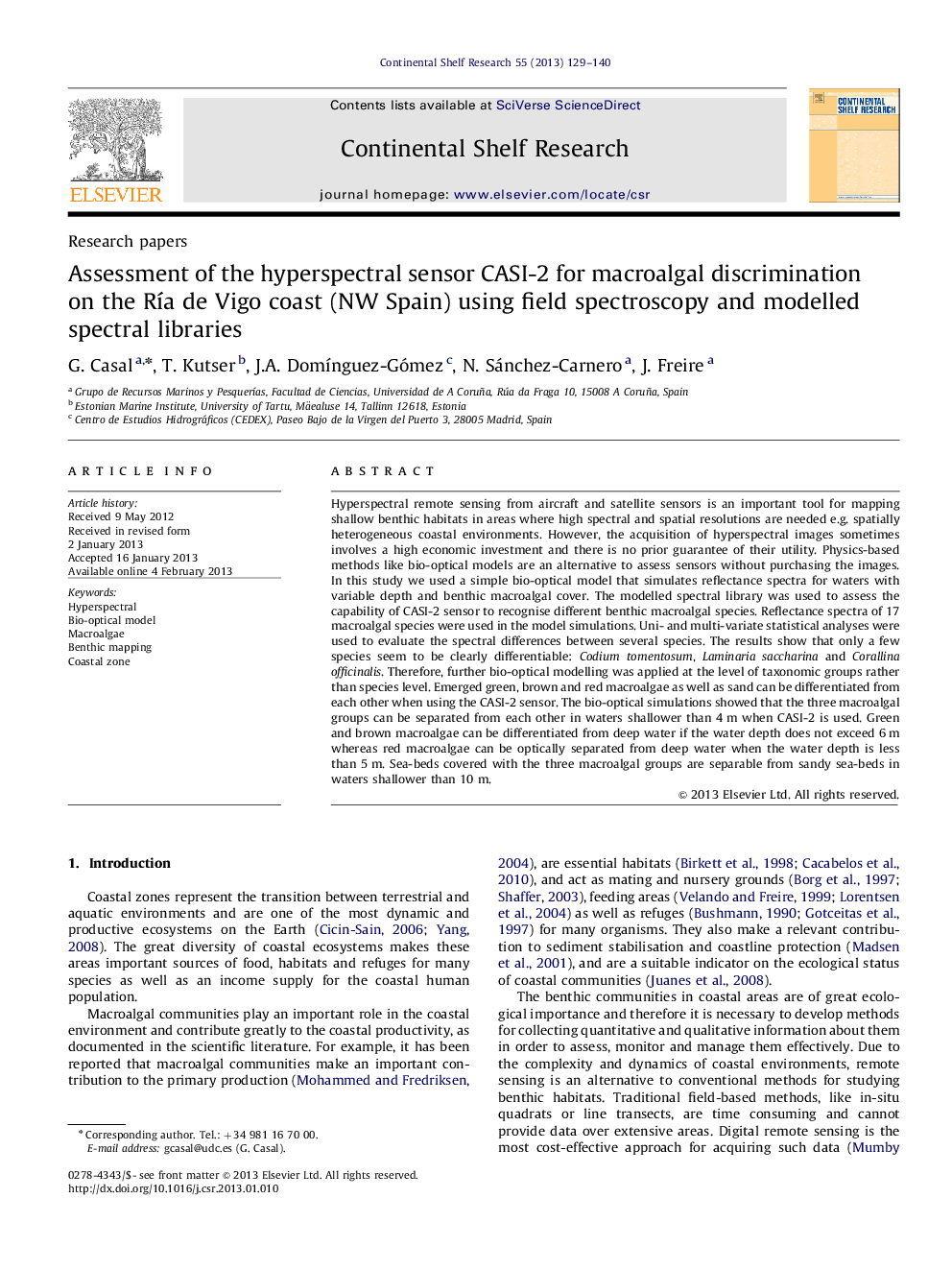| کد مقاله | کد نشریه | سال انتشار | مقاله انگلیسی | نسخه تمام متن |
|---|---|---|---|---|
| 4532201 | 1626156 | 2013 | 12 صفحه PDF | دانلود رایگان |

Hyperspectral remote sensing from aircraft and satellite sensors is an important tool for mapping shallow benthic habitats in areas where high spectral and spatial resolutions are needed e.g. spatially heterogeneous coastal environments. However, the acquisition of hyperspectral images sometimes involves a high economic investment and there is no prior guarantee of their utility. Physics-based methods like bio-optical models are an alternative to assess sensors without purchasing the images. In this study we used a simple bio-optical model that simulates reflectance spectra for waters with variable depth and benthic macroalgal cover. The modelled spectral library was used to assess the capability of CASI-2 sensor to recognise different benthic macroalgal species. Reflectance spectra of 17 macroalgal species were used in the model simulations. Uni- and multi-variate statistical analyses were used to evaluate the spectral differences between several species. The results show that only a few species seem to be clearly differentiable: Codium tomentosum, Laminaria saccharina and Corallina officinalis. Therefore, further bio-optical modelling was applied at the level of taxonomic groups rather than species level. Emerged green, brown and red macroalgae as well as sand can be differentiated from each other when using the CASI-2 sensor. The bio-optical simulations showed that the three macroalgal groups can be separated from each other in waters shallower than 4 m when CASI-2 is used. Green and brown macroalgae can be differentiated from deep water if the water depth does not exceed 6 m whereas red macroalgae can be optically separated from deep water when the water depth is less than 5 m. Sea-beds covered with the three macroalgal groups are separable from sandy sea-beds in waters shallower than 10 m.
► Physics-based methods can be an alternative to assess remote sensors.
► Codium tomentosum, Laminaria saccharina and Corallina officinalis are the most different species.
► Most of the significant differences between species appear at infrared wavelengths.
► Macroalgal groups have reflectance spectra that are consistent in shape.
► The CASI-2 sensor can differentiate between macroalgal groups until 4 m.
Journal: Continental Shelf Research - Volume 55, 1 March 2013, Pages 129–140